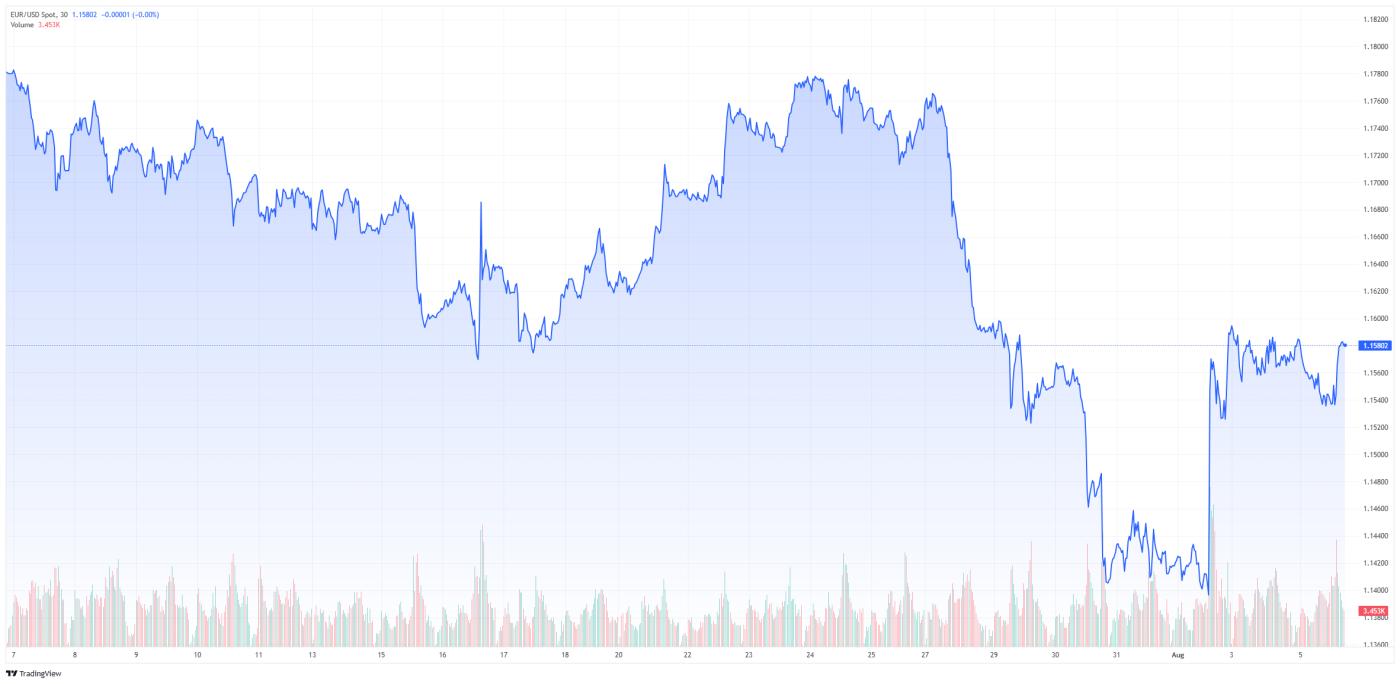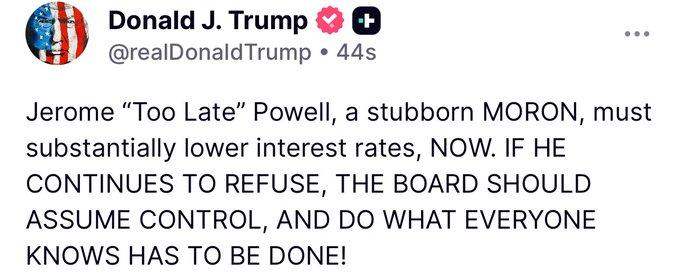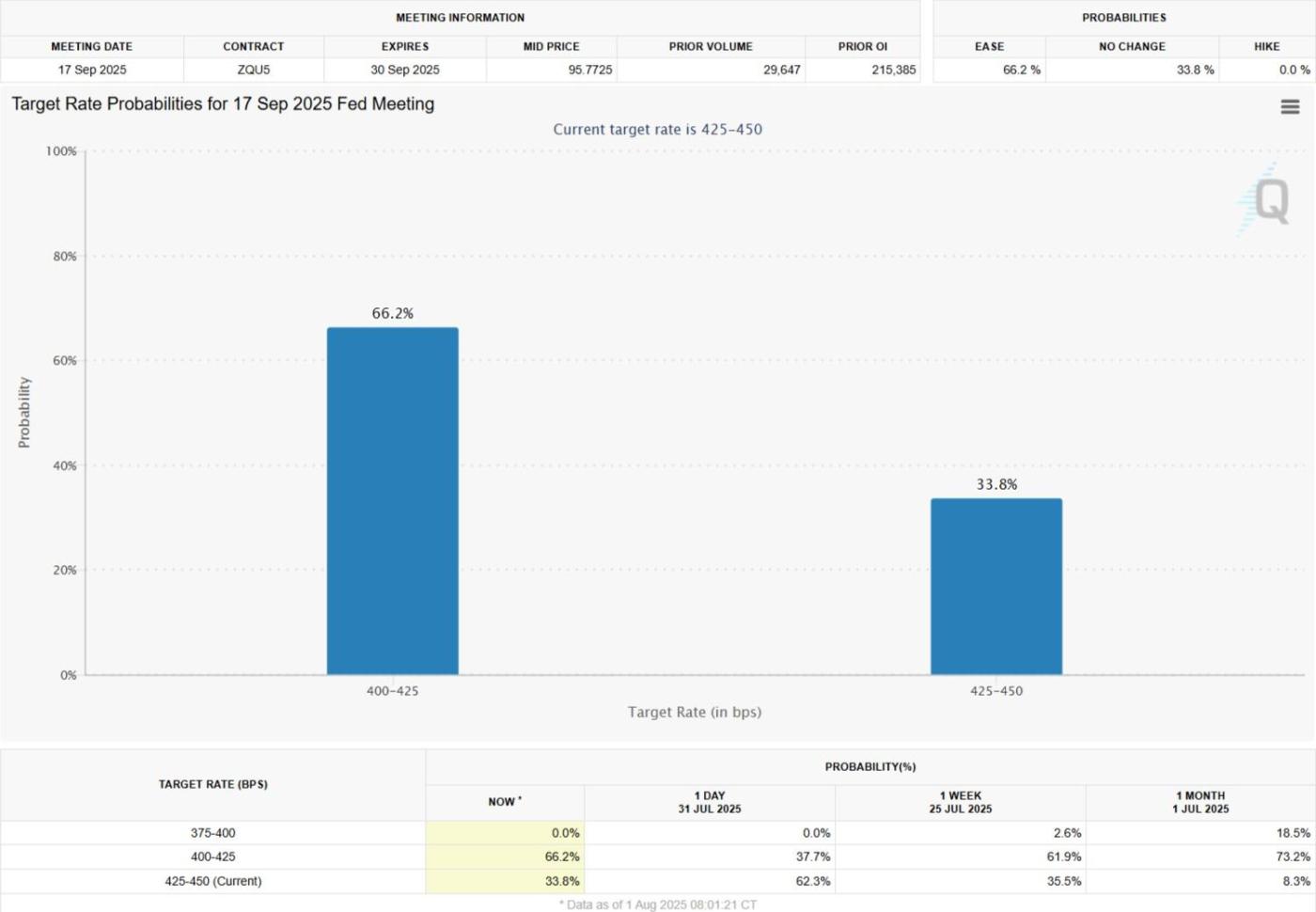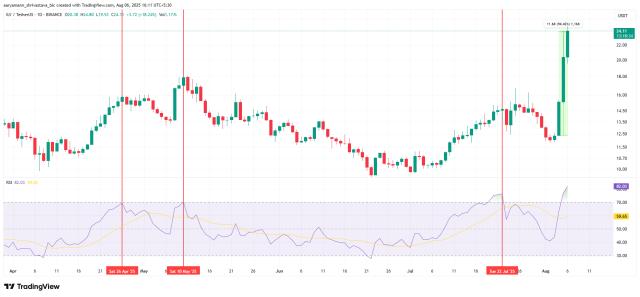The EUR/USD pair touched a dip at 1.1391 on the first day of August, the lowest level in over a month. The US Dollar (USD) found momentum despite market sentiment, maintaining a positive growth trend throughout a busy week.
However, USD eventually declined on Friday after unfavorable US data. The currency pair ultimately stabilized around 1.1550, still maintaining a significant weekly loss.
Back-and-Forth Trade War
The United States and the European Union (EU) reached a trade agreement setting a 15% tariff on most US export goods and calling for EU investment in various US sectors. The 50% tariff on EU exports to the US will continue to apply to steel, aluminum, and copper.
Meanwhile, additional details remain lacking. European Commission President Ursula von der Leyen noted that these tariffs could be subject to retaliatory measures. But she did not provide many details about whether the EU would announce them or when.
 Monthly EUR/USD chart. Source: FXStreet
Monthly EUR/USD chart. Source: FXStreetEuropean leaders strongly criticized this agreement, with German Chancellor Friedrich saying it would cause "significant damage" and French Prime Minister François Bayrou calling it "a dark day" for the EU.
Midweek, US President Donald Trump announced a 50% tariff on all imports from Brazil into the US. This was considered a "punishment" for the left-wing government.
The White House also announced a global 50% tariff on semi-finished copper products and high-copper derivative products.
Finally, the August 1st deadline took effect on Friday, spreading new tariffs. With neighboring Mexico, Trump agreed to a 90-day extension for additional negotiations but applied a 35% tariff on Canada.
The stock market collapsed before closing the week. The decline reflected market concerns about the potential impact of this decision on the global economic process.
The Federal Reserve's Rebellion
Also midweek, the Federal Reserve (Fed) announced its monetary policy decision. As widely anticipated, policymakers maintained the standard interest rate, ranging from 4.25% to 4.50%.
However, this decision included a surprise. For the first time in decades, two members, Governor Christopher Waller and Michelle Bowman, voted to reduce borrowing costs.
However, Chairman Jerome Powell explained that this decision stemmed from ongoing uncertainty regarding the impact of tariffs on inflation.
Powell also explained that with inflation still above the Fed's 2% target and the labor market remaining tight, the central bank should maintain current interest rates. According to Powell, this decision positions policymakers well to respond promptly.
Powell did not suggest the possibility of rate cuts at their September meeting. He preferred to maintain a wait-and-see approach.
This decision triggered another fury from President Trump, who has long demanded rate cuts. He used social media to attack the Fed chief, calling Powell "Too late" and arguing that his decision damages billions of dollars.
 Trump criticizes Powell on social media
Trump criticizes Powell on social mediaA Data-Packed Week Ends with a Shock
European data released these days showed the old continent escaping difficulties, thanks to the European Central Bank's (ECB) strong rate cuts.
Germany published its preliminary Gross Domestic Product (GDP) estimate for Q2. It showed the economy decreased by 0.1% in the three months to June after growing 0.4% in the previous quarter.
The country also released its preliminary Harmonized Index of Consumer Prices (HICP) for July, increasing at an annual rate of 1.8%, down from the 2% reported in June.
Domestic retail sales increased by 4.9%. This is nearly double the previous 2.6% increase.
Q2 EU GDP grew 0.4% quarterly, better than the expected 0.2%, while the annual growth was 1.4%, exceeding the 1.2% prediction.
On a negative note, HICP remained at 2% year-on-year in July according to preliminary estimates, compared to the expected 1.9%. The core annual index also remained unchanged at 2.3%.
The US schedule was packed with employment-related data, ahead of the important Nonfarm Payrolls report. But the country also published its preliminary Q2 GDP estimate, showing the US economy growing at an annual rate of 3%, much better than the 0.5% decline from the first quarter and better than the expected 2.4%.
These positive figures boosted demand for USD, which was then strongly supported by the Fed.
Regarding employment data, the Job Openings and Labor Turnover Survey (JOLTS) for June showed job opportunities on the last working day of June at 7.43 million, lower than the 7.77 million opportunities (adjusted from 7.76 million) recorded in May and lower than the market expectation of 7.55 million.
The ADP Employment Change report released on Wednesday brought more positive signals. The report showed the private sector added 104,000 new job positions in July, while job losses in June were adjusted to 23,000 from the previous estimate of -33,000.
Finally, the Challenger Job Cuts report showed US-based companies announced 62,075 job cuts in July, compared to nearly 25,900 a year earlier. This number is much higher than the 47,999 reported in June and is the second-highest for a July in the past decade.
Non-Agricultural Payroll Shocks the Market
The NFP report was finally published, and everything became chaotic. The country only added 73,000 new positions in July, while the June figure was adjusted down to 14,000 from the previous report of 147,000.
In fact, the adjustments indicate approximately 260,000 fewer job positions compared to previous estimates in recent months.
Additionally, the Unemployment Rate increased to 4.2% from 4.1% in July, as predicted, while the Labor Force Participation Rate decreased to 62.2% from 62.3%.
Finally, annual wage inflation, measured by changes in Medium Hourly Income, rose to 3.9% from 3.8%.
This news caused the USD to experience a sell-off. After the Fed's monetary policy announcement, speculative interest shifted to betting on a potential hold in September, with the likelihood of no change increasing to around 60%.
However, the poor monthly employment report changed the sentiment. Investors now believe there is over 66% probability of an interest rate cut at the upcoming Fed meeting.
 Interest Rate Cut Expectations. Source: CME FedWatch
Interest Rate Cut Expectations. Source: CME FedWatch
Notably, before the week's close, the US also published the July Manufacturing Purchasing Managers' Index (PMI), which unexpectedly dropped to 48 from 49 in June, also failing to meet the 49.5 expectation.
Meanwhile, the Michigan Consumer Sentiment Index was adjusted down to 61.7 in July. This follows the preliminary estimate of 61.8, lower than the 62.0 prediction.
By the weekend, stocks maintained significant losses due to tariff concerns. Regardless of the loosening labor market, the risk of higher inflation remained unchanged.
With that in mind, the Fed may maintain its policy in September.
In the coming days, the macroeconomic calendar will not have many notable events. The most important figures will be the US July Services PMI and EU June Retail Sales. However, the trade war may return to the spotlight.







